Chinese Giant Salamander
- March 12, 2024
- 0 comment
The Chinese Giant Salamander (Andrias davidianus) stands as one of the world’s most fascinating amphibians. Not only is it the largest salamander, but it is also one of the largest amphibians in existence today. Found in the mountain streams and lakes across China, this species has captivated scientists, conservationists, and the general public alike. Its unique features, behavior, and the challenges it faces offer a profound glimpse into the complex interplay between species survival and human activity.

| Category | Details |
|---|---|
| Scientific Name | Andrias davidianus |
| Common Names | Chinese Giant Salamander, “Baby Fish” (due to its cry-like sounds) |
| Classification | Kingdom: Animalia, Phylum: Chordata, Class: Amphibia, Order: Urodela, Family: Cryptobranchidae |
| Size | Up to 1.8 meters (nearly 6 feet) in length |
| Weight | Can weigh up to 50 kilograms (110 pounds) |
| Lifespan | Up to 60 years in the wild, potentially longer in captivity |
| Habitat | Cold, fast-flowing streams and rivers in mountainous regions; requires clean, oxygen-rich water for survival |
| Distribution | Endemic to China, though populations have drastically decreased and are now fragmented across the country |
| Diet | Carnivorous, feeding on fish, crustaceans, and smaller amphibians. It is an ambush predator. |
| Behavior | Nocturnal; utilizes unique vocalizations for communication among its kind. Largely solitary outside of breeding season. |
| Reproduction | Breeds in late summer; females lay hundreds of eggs in protected underwater burrows, which are then guarded by the males until they hatch. |
| Conservation Status | Classified as Critically Endangered by the International Union for Conservation of Nature (IUCN). Significant threats include habitat destruction, pollution, and illegal hunting for food and traditional medicine. |
| Conservation Efforts | Includes habitat restoration, captive breeding programs, and enforcement of hunting bans. Raising public awareness and promoting a culture of conservation are also key strategies. |
| Cultural Significance | Associated with longevity and good fortune in Chinese culture. Despite its revered status, it has been heavily exploited for its meat and alleged medicinal properties. |
| Challenges | Habitat protection, pollution control, and illegal poaching pose significant threats. Effective conservation requires global cooperation, extensive research, and community engagement to ensure the species’ survival. |
Appearance
Size
The Chinese Giant Salamander can reach lengths of up to 1.8 meters (almost 6 feet), making it the largest amphibian in the world today. It has a considerable weight, tipping the scales at up to 50 kilograms (about 110 pounds). This immense size is a characteristic trait that distinguishes it from other amphibian species.
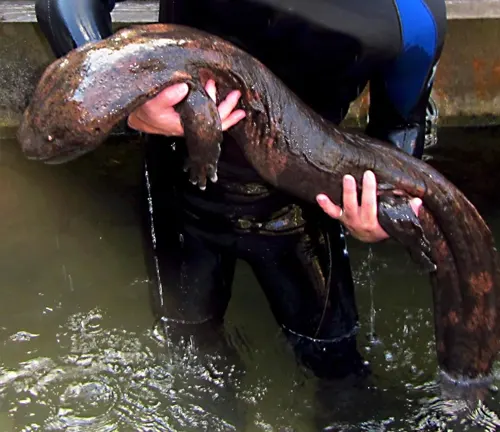

Body Shape and Structure
Its body is elongated and robust, with a distinctly broad, flat head that sets it apart from other salamanders. The skin of the Chinese Giant Salamander is smooth yet covered in wrinkles, which aid in its unique method of respiration through the skin. These wrinkles increase the surface area for gas exchange, crucial for its aquatic lifestyle.
Coloration
The skin features a mottled pattern, blending shades of brown, gray, and occasionally green, perfect for camouflage in its natural habitat. This coloration mimics the rocky, streambed environments in which it dwells, helping it to avoid predators. The variability in skin color among individuals allows for a degree of individual camouflage and adaptation to their specific surroundings.
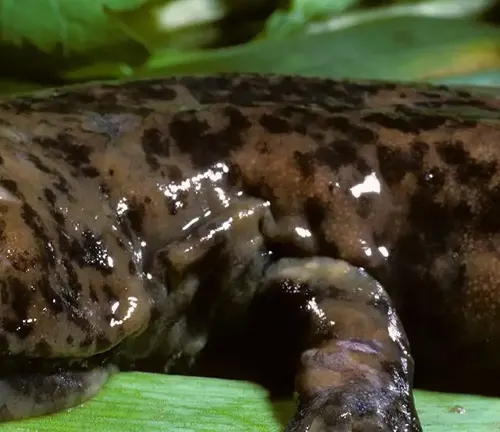
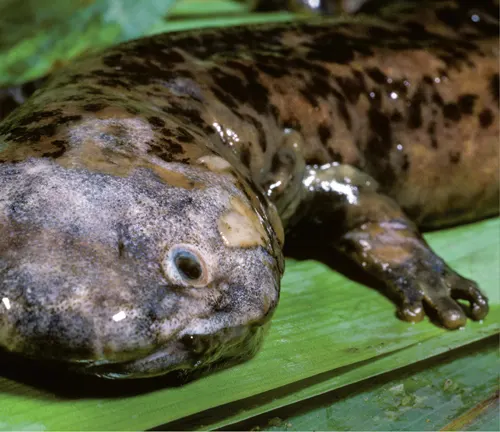
Limb Structure
Despite its large body, the Chinese Giant Salamander has relatively short limbs, which are well-adapted for its life in water. Each front foot has four toes, while each rear foot has five, aiding in swimming and maneuvering through its aquatic environment. The limb structure underscores its adaptation to a predominantly aquatic lifestyle, differentiating it from many terrestrial amphibians.
Sensory Features
The eyes of the Chinese Giant Salamander are small and lack eyelids, an adaptation suited more for sensing changes in light than for detailed vision. It possesses a highly sensitive lateral line system, similar to that of fish, which detects vibrations and changes in water pressure, enabling it to navigate and hunt in murky waters. This sensory adaptation is vital for its survival, allowing it to respond to the presence of prey and predators alike.
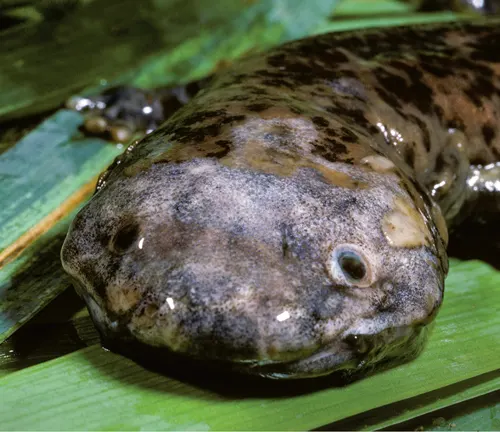
Habitat and Distribution
The Chinese Giant Salamander once roamed vast swathes of China, flourishing in its myriad cold, oxygen-rich streams and rivers.

These pristine waters provided the ideal conditions for feeding, breeding, and thriving. Yet, the relentless march of habitat destruction, pollution, and expansive human development has dramatically reduced its natural range. Urban expansion, industrial pollution, and agricultural encroachment have severely impacted these critical habitats, leading to a significant decline in the salamander’s distribution, threatening its survival and highlighting the urgent need for conservation measures to protect this ancient species and its dwindling habitats.
Diet and Behavior
The Chinese Giant Salamander is nocturnal and predominantly a carnivore, feeding on a diet of fish, crustaceans, and sometimes smaller amphibians.
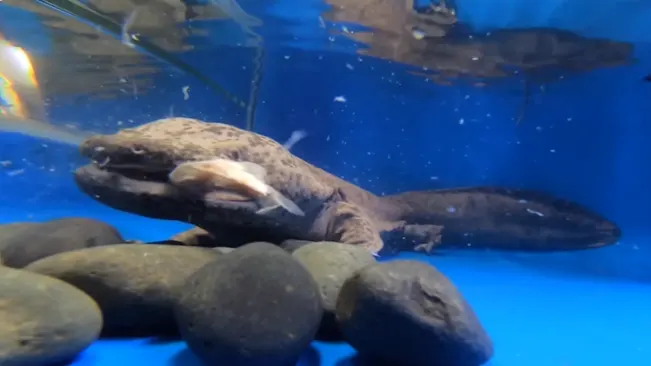
It is an ambush predator, lying in wait for its prey before launching a swift attack. Remarkably, this salamander has been observed using vocalizations for communication, emitting a variety of sounds that resemble a baby’s cry, which is why it is sometimes referred to as the “baby fish” by locals.
Reproduction and Lifecycle
The reproductive habits and lifecycle of the Chinese Giant Salamander (Andrias davidianus) highlight its unique adaptation to the freshwater habitats of China. Breeding for these amphibians occurs primarily in late summer when females select secluded underwater burrows to lay their eggs, often numbering in the hundreds. This choice of nesting site is crucial for protecting the eggs from potential predators and ensuring a high survival rate.
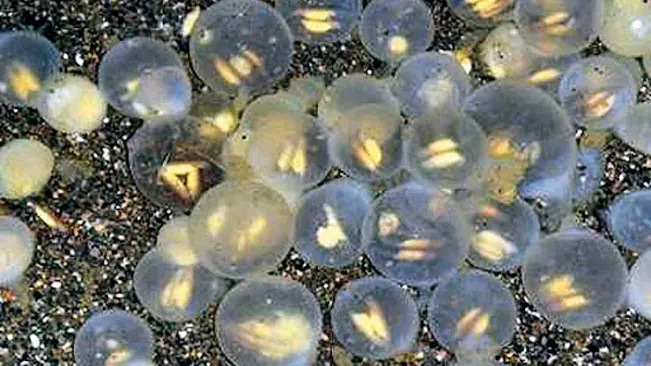
In an intriguing display of parental care, uncommon among amphibians, the male salamander takes on the role of guardian, staying close to the nest to protect the eggs until they hatch. This period of vigilance can extend several weeks, during which the male fiercely defends the offspring. Upon hatching, the larvae emerge fully aquatic and are dependent on the water’s nutrients for growth. They embark on a lengthy and vulnerable development phase, undergoing several stages of growth before they reach full maturity. This lifecycle, from egg to adult, underscores the intricate balance between these ancient creatures and their environment, revealing the challenges they face in the wild, especially with the diminishing quality and availability of suitable breeding sites due to human activities and environmental changes.
Conservation Status
The Chinese Giant Salamander is classified as Critically Endangered by the International Union for Conservation of Nature (IUCN). Its populations have experienced dramatic declines over the past few decades due to overharvesting for food and traditional medicine, habitat loss, and pollution. Conservation efforts are underway to protect this species, including habitat restoration, captive breeding programs, and strict enforcement of hunting bans.
Cultural Significance
In Chinese culture, the Giant Salamander is often associated with longevity and good fortune. It has been featured in art, literature, and folklore for centuries. Despite its cultural reverence, the demand for Giant Salamander meat and supposed medicinal properties has contributed to its decline.
Challenges and Future Directions
Conservation of the Chinese Giant Salamander faces several challenges, including the need for comprehensive habitat protection, addressing pollution, and curbing illegal poaching. Raising public awareness about the plight of this remarkable species and fostering a culture of conservation are vital steps toward its recovery. Research into its biology, ecology, and genetics also plays a crucial role in informing conservation strategies and ensuring the survival of the Chinese Giant Salamander for future generations.
Different Species
Andrias sligoi
Sometimes referred to as the South China Giant Salamander, it was previously considered a population of Andrias davidianus but has been proposed as a separate species based on genetic differences. This species is believed to inhabit rivers in southern China and is distinct in its genetic makeup and possibly in physical size and characteristics.
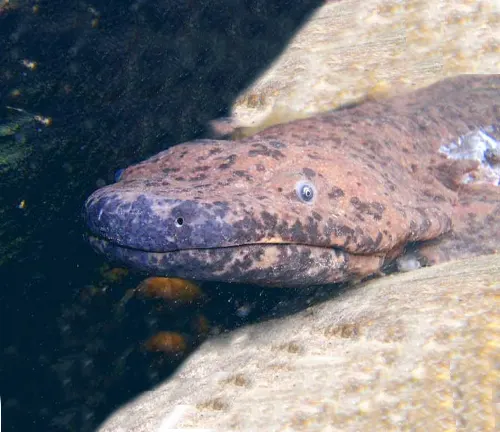

Andrias sp.
Additional genetic analyses have suggested the presence of at least one more undescribed species within the Andrias genus in China. This potential species has not yet been formally described or named, indicating the complexity and the need for further research within these giant salamanders’ populations.
Conclusion
The Chinese Giant Salamander is an emblematic species that highlights the beauty and fragility of Earth’s biodiversity. Its survival is intrinsically linked to the health of its habitat and the actions of humans. Through concerted conservation efforts, research, and a global commitment to environmental stewardship, there is hope that this ancient amphibian will continue to thrive in China’s rivers and streams, a living link to the natural world’s past and a beacon of hope for its future.
This article offers a comprehensive look at the Chinese Giant Salamander, from its biology and habitat to the challenges it faces in the modern world. As conservation efforts continue, it remains a symbol of the urgent need for environmental protection and the sustainable coexistence of humans and wildlife.
Frequently Asked Questions (FAQs)
- What is the Chinese Giant Salamander?
The Chinese Giant Salamander (Andrias davidianus) is the world’s largest amphibian, known for its considerable size and unique lifestyle. It lives in freshwater environments in China and is critically endangered due to habitat loss and overharvesting. - How big can a Chinese Giant Salamander get?
It can grow up to 1.8 meters (almost 6 feet) in length and weigh up to 50 kilograms (about 110 pounds), making it the largest living amphibian on the planet. - Where can the Chinese Giant Salamander be found?
This species is endemic to China, inhabiting cold, fast-flowing streams and rivers in mountainous areas. However, its population is fragmented due to environmental degradation and human activities. - What does the Chinese Giant Salamander eat?
It is a carnivore that feeds primarily on fish, crustaceans, and sometimes small mammals or amphibians. It uses an ambush method to catch its prey, relying on its camouflage. - How does the Chinese Giant Salamander breathe?
Unlike many amphibians, it mainly breathes through its skin in a process called cutaneous respiration. Its wrinkled skin increases the surface area for oxygen exchange. - Is the Chinese Giant Salamander social?
Generally solitary, Chinese Giant Salamanders come together only during the breeding season. They are known to be territorial and may vocalize to communicate with one another. - How do Chinese Giant Salamanders reproduce?
Females lay eggs in hidden underwater nests, which are then fertilized externally by the male. The male often guards the nest until the eggs hatch, showing a rare example of parental care among amphibians. - What threats do Chinese Giant Salamanders face?
They are critically endangered, facing threats from habitat destruction, pollution, climate change, and poaching for food and traditional medicine. - What is being done to protect the Chinese Giant Salamander?
Conservation efforts include habitat restoration, captive breeding programs, and law enforcement to combat illegal poaching. International cooperation and awareness campaigns are also crucial for its survival. - Why is the Chinese Giant Salamander important?
As a “living fossil,” the Chinese Giant Salamander provides valuable insights into evolutionary biology and the health of freshwater ecosystems. Its survival is crucial for maintaining biodiversity and ecological balance.



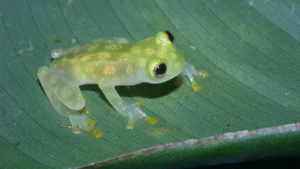
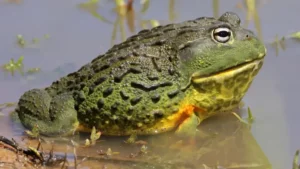


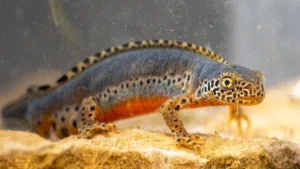
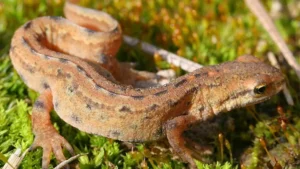

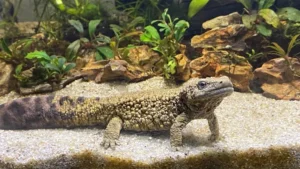
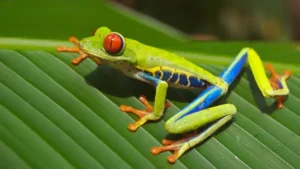
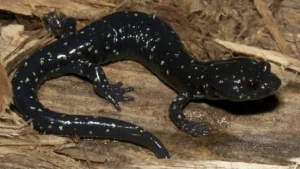
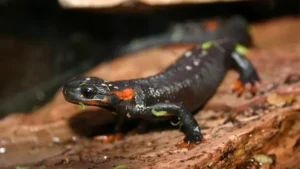
Leave your comment